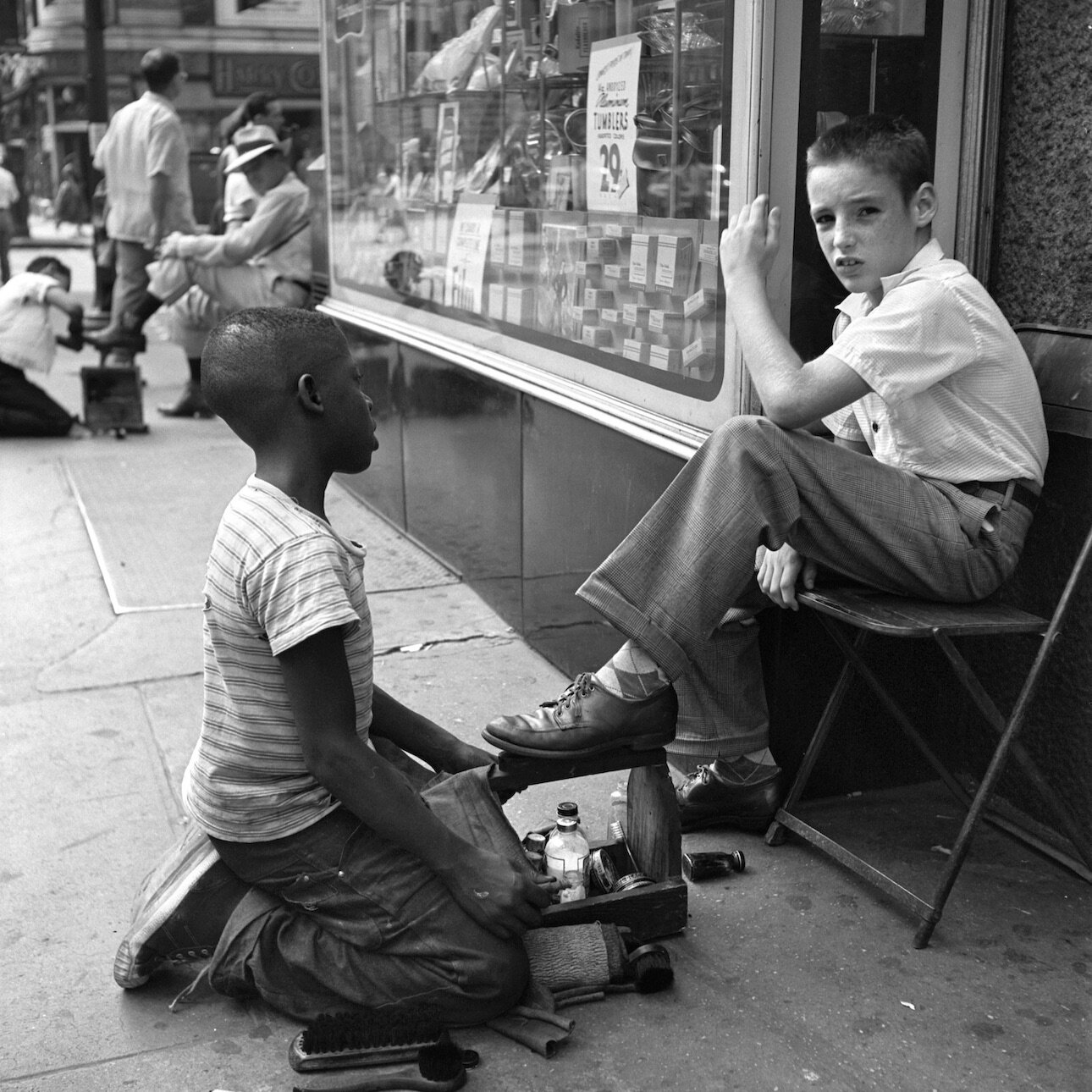Book Review: Thames & Hudson: VIVIAN MAIER
© Estate of Vivian Maier, Courtesy of Maloof Collection and Howard Greenberg Gallery, NY
New York, May 5, 1955
Written by Gabrielle Keung
Copy Edited by Janeen Mathisen
Photo Edited by Yanting Chen
Vivian Maier was a woman of opposites. Her work is as elusive as she was; it’s paradoxical and difficult to pin down. Detachment and intimacy coexist in her photos: she closed the physical distance between herself and the world by venturing into marginal spaces such as seedy neighborhoods in Chicago and New York while remaining detached and stopping short of striking meaningful conversations with her subjects. The histories and stories of the people she bumped into on the streets or the children she took care of are inaccessible mysteries.
© Estate of Vivian Maier, Courtesy of Maloof Collection and Howard Greenberg Gallery, NY
New York, January 26, 1955
Maier’s pictures are characterized by their paradoxical impermanence: her subjects stroll, march or run down the streets of New York or Chicago, surrounded by movement and commotion. Maier’s ingenuity lies in her ability to catch moments of stillness in the midst of the movement and activity, which gives her photographs a crisp, sharp quality. Capturing such moments also gives her photos a delicate feeling — the stillness wasn’t meant to last. It is extraordinary how the humanity of her subjects are deeply felt, even though they could easily have escaped the camera if Maier had taken the picture a moment later.
The photobook “Vivian Maier” highlights Maier’s fearlessness – she was unapologetic and neither asked or needed permission to photograph strangers. She did not hesitate to get a close up of someone’s lower body or have veined and wrinkled hands occupy more than half the frame. Among her thoughtful snapshots, she’s taken pictures of calves perched on a pair of high heels, feet hanging off the ledge of a pool, a woman’s coiffure or a man’s disheveled hair, women touching their faces as they contemplatively walk down the street and an old man seemingly asleep on a bench in the middle of a busy street.
© Estate of Vivian Maier, Courtesy of Maloof Collection and Howard Greenberg Gallery, NY
Unknown location, 1958
Since so little is known about her, Maier’s self-portraits hint at the ways she saw herself – and are key to how others perceive her. Her reflection is separate from her, a mere replica, and her displaced shadows thrown on the pavement or the wall are a part of her, but not her. She is a silhouette plastered against light – she can be seen but not touched, just like her reflection in the mirrors.
Much like the unknown artist she was before John Maloof excavated her work, Maier was unapproachable and elusive in her photography. Reconciling these opposites is tempting yet nearly impossible: She was an amateur but her work is exceptional and her skill impeccable; she took countless photographs but developed few of them; she was a recluse but restless and needed to get out onto the streets to take pictures.
The question of what Maier would think about her photographs being displayed in a photobook with her name is lost to time – the inevitable result of her posthumous fame. It’s doomed to be a question forever asked and never answered, her opinion eternally withheld. Whether her photographs are in color or black and white, pictures of children or adults, self-portraits or landscape, they’re marked by authenticity and a hunger-driven frankness for the visual glory of life. And that is the answer to a question anyone who views her art didn’t know they were asking.
Courtesy of Thames & Hudson







